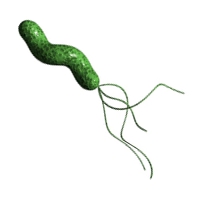Prokaryotic flagella, known as flagella in plural and flagellum in singular, are essential structures that facilitate the motility of bacterial cells. These long, filamentous surface proteins enable bacteria to propel themselves through their environment, allowing for movement and navigation. A collection of flagella on a single cell is referred to as a tuft, which plays a crucial role in the cell's ability to move in a specific direction.
In the context of bacterial motility, flagella function similarly to a propeller, rotating to drive the cell forward. The arrangement and distribution of these flagella can vary significantly among different bacterial species, influencing their movement patterns. Understanding the structure and function of prokaryotic flagella is fundamental to grasping how bacteria interact with their surroundings and navigate through various environments.
As we delve deeper into the study of prokaryotic flagella, we will explore the various types of flagellar distribution and their implications for bacterial motility. This foundational knowledge sets the stage for further investigation into the complexities of bacterial movement and behavior.




